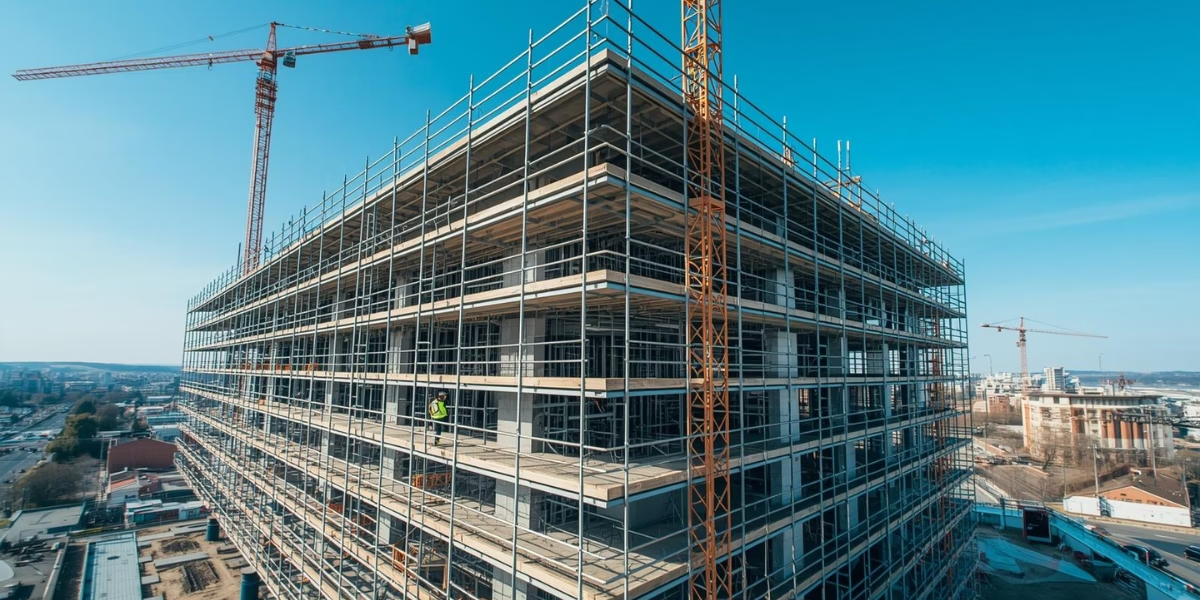Discover how Fire Retardant Resin improves flame resistance in construction panels, ducts, and FRP reinforcements and ensures safer, more durable infrastructure.
In today’s construction industry, safety is no longer, it’s a standard. As urban structures rise taller and denser, the risk of fire hazards increases. Engineers and builders are turning to advanced materials to meet stricter safety codes. Among these innovations, Fire Retardant Resin stands out as a key solution.
This article explores how Fire Retardant Resin enhances flame resistance in panels, ducts, and FRP reinforcements, building safer and more reliable infrastructure.
What Is Fire Retardant Resin?
Fire Retardant Resin is a specialized composite material designed to resist ignition and slow the spread of flames. It’s made by blending base resins, like polyester, vinyl ester, or epoxy, with flame-retardant additives such as bromine, chlorine, or phosphorus compounds.
When exposed to heat, these resins form a protective barrier. This char layer prevents oxygen from reaching the surface, reducing smoke and delaying combustion. In simple terms, it gives people more time to escape and helps limit structural damage.
Why Fire Retardant Resin Matters in Construction?
Fire incidents can devastate buildings, but the right materials can make a difference. Fire Retardant Resin contributes not only to fire safety but also to structural integrity and longevity.
Its benefits include:
- Enhanced flame resistance: Reduces ignition risk.
- Lower smoke emission: Improves visibility during evacuation.
- Corrosion resistance: Protects against environmental degradation.
- Durability: Maintains performance under heat and stress.
By integrating these properties, modern infrastructure becomes safer and more sustainable.
Applications of Fire Retardant Resin in Modern Construction
The use of Fire-Retardant Resin has expanded across multiple areas of construction. Its versatility allows it to be molded, layered, or reinforced into durable and safe components.
Fire-Safe Panels and Claddings
Panels and claddings made with fire-retardant resin act as a defensive shield during fire incidents. They resist ignition and prevent flame spread between floors or rooms.
Architects prefer these materials for commercial and high-rise buildings. They combine safety with aesthetic appeal, ensuring compliance without compromising design.
Ventilation and Exhaust Ducts
In HVAC systems, ducts transport air throughout the building. If made from flammable materials, they can quickly spread fire. Fire-retardant resin-based ducts, however, resist ignition and reduce smoke emission.
They are lightweight, corrosion-resistant, and maintain performance even under high temperatures. This makes them ideal for hospitals, airports, and underground facilities.
FRP Reinforcements and Structural Components
FRP reinforcements made with fire-retardant resin are increasingly replacing traditional metal supports. They’re non-conductive, strong, and inherently flame-resistant.
In case of fire, they limit the spread and maintain the structure longer than standard composites. Industries use them in bridges, tunnels, and commercial structures where safety and longevity are critical.
Electrical and Utility Systems
From switch boxes to insulation covers, Fire Retardant Resins ensure fire safety in electrical installations. They prevent short-circuit fires and protect cables from external heat sources.
Because they are non-corrosive and water-resistant, they extend system life in harsh conditions.
Advantages of Using Fire Retardant Resin in Construction
The adoption of Fire Retardant Resin goes beyond safety, it offers economic and design advantages too.
- Compliance with fire standards: Meets building codes and safety norms.
- Design flexibility: Can be molded into complex shapes and textures.
- Lightweight strength: Reduces load without sacrificing stability.
- Long-term performance: Withstands heat, moisture, and chemical exposure.
With such benefits, it’s clear why this material has become a preferred choice for modern infrastructure.
Towards Safer, Smarter Construction
Incorporating Fire-Retardant Resin into building materials marks a step forward in engineering safety. As cities grow, the need for fire-resistant materials becomes more urgent.
By using these resins in panels, ducts, and reinforcements, engineers can design buildings that protect both property and lives. Transitioning to advanced fire-safe composites is not only a smart decision—it’s a responsibility.
Concluding Thoughts
Fire Retardant Resin is shaping the future of safer construction. Its flame resistance, structural strength, and adaptability make it essential for modern building systems. Whether in high-rise facades, ventilation ducts, or FRP reinforcements, it ensures that safety remains at the heart of innovation. By choosing these resins, builders can create structures that don’t just stand tall, but also stand safe.
COMPANY INFO
Website: www.crestresins.com
Phone: +91 9879233188
Email: enquiry@crestresins.com
Address: 605/A, 6th Floor, Tower D, Times Square Grand Office, Sindhubhavan Marg, Near Taj Hotel, Ahmedabad, Gujarat - 380059

